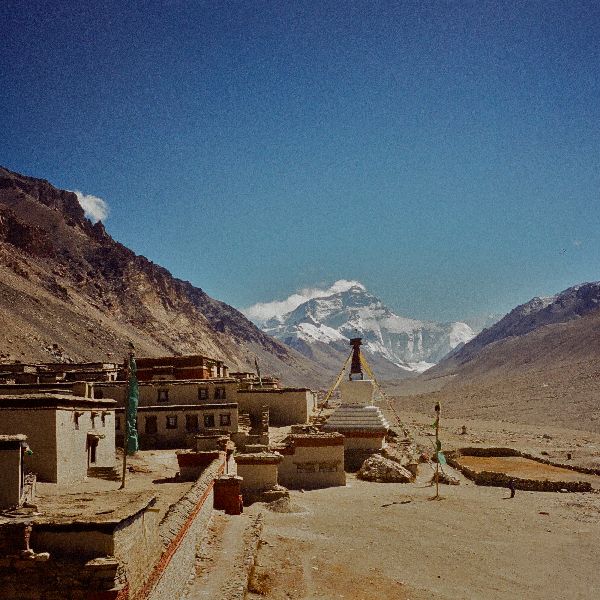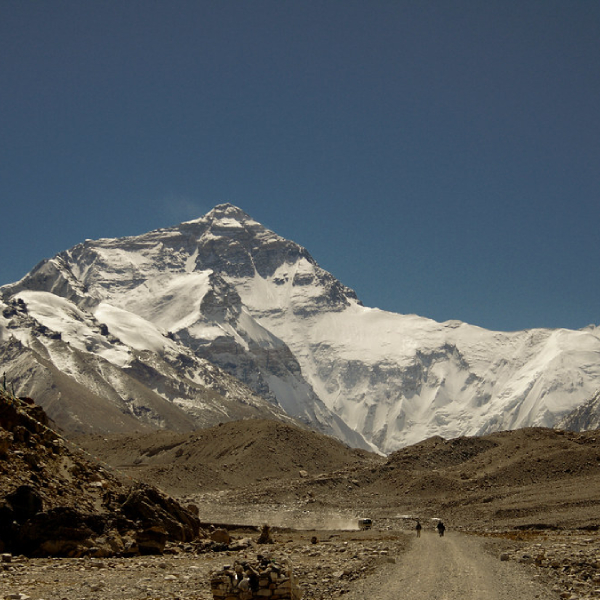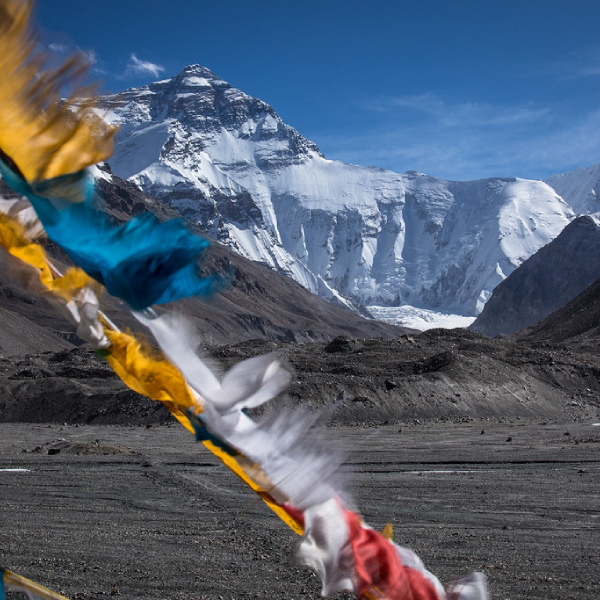Everest North Fase Base Camp 8nights-9days
Everest North Fase Base Camp 8nights-9days
Everest North Face Base Camp is a vital staging point for climbers embarking on the daunting journey to conquer the world's highest peak, Mount Everest. Situated in Tibet, on the northern side of the mountain, it offers a unique perspective on this iconic summit. Nestled at an altitude of approximately 5,200 meters (17,060 feet), the base camp provides a stark contrast to the bustling South Base Camp in Nepal. It's a remote and rugged outpost where climbers acclimatize and prepare for the challenging ascent. The surroundings are characterized by barren, rocky terrain, with awe-inspiring views of Everest's formidable North Face, a sight that both inspires and daunts those who dare to dream of reaching its summit. The North Face Base Camp serves as a testament to human perseverance in the face of extreme conditions and continues to be a beacon for mountaineers seeking to conquer the ultimate peak.
Short Itinerary
|
DAYS |
Activities |
Accommodation |
Meal |
|
DAY 01 |
Arrival at Lhasa |
Hotel |
-/-/D |
|
DAY 02 |
Lhasa sightseeing |
Hotel |
B/-/D |
|
DAY 03 |
Lhasa sightseeing |
Hotel |
B/-/D |
|
DAY 04 |
Lhasa – Shigatse (354Km, 3840m) |
Simple Guest House |
B/-/D |
|
DAY 05 |
Shigatse – Everest North Face at Rongbuk (334Km, 5000m) |
Simple Guest House |
B/-/D |
|
DAY 06 |
Rongbuk – Shigatse (334Km, 3840m) |
Simple Guest House |
B/-/D |
|
DAY 07 |
Shigatse – Damxung (326Km, 4290m) |
Simple Guest House |
B/-/D |
|
DAY 08 |
Damxung- Namtso- Lhasa (300km, 3650m) |
Hotel |
B/-/D |
|
DAY 09 |
Final Departure |
|
B/-/D |
Tour Program
Expand AllUpon arrival in Lhasa, Your English-speaking Tibetan guide and driver will give you a warm welcome and accompany you to your hotel. Lhasa, one of the world's highest cities, is a place of unique beauty and rich culture. Tibet's high altitude can challenge visitors. We prioritize acclimatization, providing support for your well-being and safety. Remember to stay well-hydrated and get plenty of rest to minimize any symptoms of altitude sickness. Get ready to experience this once-in-a-lifetime adventure! You'll spend the night in Lhasa, preparing for the incredible journey ahead.
Overnight in Lhasa. [-/-/D]
On our second day, our tour will commence with a visit to the iconic Potala Palace. Constructed in the 17th century by the fifth Dalai Lama, this majestic palace offers awe-inspiring views of the entire city and houses the private quarters of the Dalai Lama, as well as numerous grand state rooms and chapels. Following our exploration of the palace, we will proceed to the revered Jokhang Temple, founded in the 7th century by Songtsen Gampo. This temple is considered the most sacred in Tibet. Here, you can immerse yourself in the rich cultural heritage of this magical land. Take a stroll through the vibrant Barkhor old quarter and join pilgrims from across the Tibetan plateau on a kora, a sacred circumambulation around the Jokhang Temple. Kora is a practice in Tibetan Buddhism where devotees walk clockwise around a sacred site, often while reciting mantras, prayers, or sacred texts. It is believed to bring good fortune and blessings to those who undertake it.
Overnight in Lhasa. [B/-/D]
On the third day, our exploration continues with visits to the Drepung and Sera monasteries. After breakfast, we'll journey to the outskirts of Lhasa to witness the magnificence of the Drepung Monastery, which holds the distinction of being the largest monastery in Tibet and once accommodated 7,000 monks. Together with the Ganden and Sera monasteries, Drepung is one of the three great centers of Tibetan Buddhist education within the Gelugpa School, also known as the Yellow Hat Sect. Founded in the 15th century, it served as the former residence of the Dalai Lama before the construction of the majestic Potala Palace.
In the afternoon, prepare to be captivated by the renowned debates of the Sera Monastery, where monks engage with vibrant energy in intellectual discourse, challenging each other's understanding of Buddhist philosophy. This experience is truly awe-inspiring and not to be missed, offering a glimpse into the intellectual vitality of Tibetan monastic life.
Overnight in Lhasa. [B/-/D]
On the fourth day, the adventure begins! We'll hit the road and head west towards Shigatse, the second-largest city in Tibet, arriving before dinner time. As we set out, we'll start ascending the Kampa-la Pass at 4,797 meters, where you'll witness the stunning Mt. Noijin Kangsang, standing tall at 7,206 meters, and the breathtaking turquoise waters of the holy lake, Yamdrok-Tso. This surreal sight will leave you spellbound throughout the journey.
Our next destination is the Karo-la Pass at 5,050 meters, where you'll marvel at the glacier that majestically hugs the roadside. Finally, we'll arrive in the charming Gyantse town, which is home to the Kumbum Stupa inside Pelkor Chode Monastery, renowned for its exquisite Tibetan art paintings. Climbing to the top of the Kumbum, you'll also be treated to a magnificent view of the majestic Gyantse Dzong fortress, perched high above the valley. It's a day filled with breathtaking natural beauty and cultural wonders.
Overnight in Shigatse. [B/-/D]
On the fifth day, your journey to the vicinity of Mount Everest's North Base Camp is an exhilarating adventure filled with remarkable highlights. You'll make your way to Rongbuk, nestled near the iconic Mt. Everest. Situated at a lofty 5200 meters above sea level, your path will lead you over two challenging passes, Gyatso-la at 5220 meters and Pang-la at 5150 meters, offering breathtaking vistas. Gyatso-la grants your first glimpse of Mt. Everest and the Himalayas, while Pang-la unveils spectacular panoramas of peaks like Makalu, Lhotse, Cho Oyu, and the towering Mount Everest. The journey also includes a visit to the prestigious Rongbuk Monastery, the world's highest monastery, steeped in cultural and religious significance. As the day draws to a close, you'll find rest at a tourist campsite near the Everest Base Camp, where direct views of Mt. Everest (Qomolangma) await. Please note that due to environmental concerns, access to the Everest Base Camp itself has been restricted since 2018. Accommodations will be in simple guesthouse tents with dorm-style beds, and a sleeping bag is recommended. To minimize the environmental impact of your journey, you'll have the convenience of an eco-friendly bus shuttle service to reach Rongbuk. This expedition guarantees an unforgettable experience, showcasing stunning natural beauty and a visit to a site of great cultural and historical significance in the shadow of Mount Everest.
Overnight at a simple guest house. [B/-/D]
The sixth day marks the conclusion of your Tibetan journey, a voyage that has taken you through some of the most sacred Buddhist monasteries and the world's most majestic mountains. For those who rise early, there's a chance to witness the sunrise, offering a glimpse of the towering Everest peak at 8,848 meters. Following breakfast, we embark on a visit to Rongbuk Monastery, where we bid farewell to the awe-inspiring North Face of Mount Everest. The day concludes with a return journey to Shigatse, promising the comfort of a refreshing shower and a peaceful night's sleep. If time allows, don't miss the opportunity to take a Kora, a meditative walk around the monastery, allowing you to absorb the breathtaking panorama of the valley and the imposing Dzong (fortress). It's a fitting end to an unforgettable Tibetan adventure.
Overnight at Shigatse. [B/-/D]
On the seventh day, as early as possible, your day will commence with a visit to the Tashilhunpo Monastery, a sacred site constructed in the 15th century by the first Dalai Lama and currently serving as the seat of the Panchen Lama. Following this spiritual experience, you'll head northeast toward the lesser-visited nomadic Yangpachen Valley. Here, you'll be treated to spectacular views of the Nyenchen Thangla Range. While the tourist campsite near Namtso lake shore is no longer available, there's no need to worry. An alternative plan is in place - you'll be accommodated in the nearby town of Damxung. But before reaching Damxung, there's a stop planned in Yangpachen, renowned for its local hot spring resort. After long days of travel and exploration, it's the perfect time to unwind and enjoy some well-deserved relaxation.
Overnight at Damxung. [B/-/D]
On the eighth day, the journey takes you across the Nyenchen Thangla Range, culminating in a crossing of the Largen-la Pass at 5,190 meters. From this vantage point, the sacred Namtso Lake, widely regarded as the most beautiful lake in Tibet, unfolds on the horizon. As you enter the Changtang plateau, you'll witness the continuation of the nomadic way of life in this region.
Arriving at the shores of Namtso Lake, you'll be treated to a breathtaking panorama of the Nyenchen Tanglha snow peak, standing tall at 7,162 meters, against the backdrop of the crystal blue waters of Namtso. Your journey will include a visit to Tashi Dor Monastery before you drive back to Lhasa. This leg of your journey offers an awe-inspiring and serene encounter with the natural beauty and spirituality of Tibet.
Overnight at Lhasa. [B/-/D]
On the ninth day, you will be transferred to the hotel for the final Departure.
Tour Includes
- All necessary travel permits in Tibet.
- All entrance fees to temples, monasteries, and palaces.
- All environmental costs for lakes, glaciers, and national parks.
- Accommodation on a shared room basis with breakfast described in the itinerary above.
- Experienced local English-speaking Tibetan tour guide.
- Transportation in Tibet (group transfers from airport/station).
- Driver and guide’s food and accommodation.
- Vehicle fuel, tools, and vehicle repairs (if necessary).
- Oxygen tank & and bottled mineral water available in the group vehicle.
- Welcome dinner.
Tour Excludes
- China VISA Plane or train tickets in/out of Tibet.
- Meals, drinks, and all other personal expenses.
- Extra expenses incurred due to unexpected natural events (delays, road washouts, snowfall…)
- Tips to guide and driver, but this depends on you.
- Anything not specified in the “included” section.
FAQ
Expand AllØ The Everest North Face Base Camp trek is an adventurous journey that takes trekkers to the base camp of Mount Everest from the northern face, offering stunning views of the world's highest peak.
Ø The trek typically starts and ends in Lhasa, Tibet, the capital city of the Tibet Autonomous Region.
Ø The trek spans 8 nights and 7 days, providing a challenging yet rewarding experience for trekkers.
Ø The highlights include panoramic views of Mount Everest and other Himalayan peaks, encounters with Tibetan culture and traditions, and exploration of the remote and rugged landscapes of Tibet.
Ø The trek is considered moderately challenging, with altitudes reaching over 5,000 meters (16,400 feet) and rugged terrain. Trekkers should be in good physical condition and prepared for high-altitude trekking.
Ø The best time for the trek is during the spring (April to May) and autumn (September to October) seasons when the weather is generally favorable, and the skies are clear for stunning mountain views.
Ø Trekkers need to obtain the Tibet Travel Permit and other necessary permits from the Chinese authorities to visit the Everest North Face Base Camp region.
Ø Accommodation options include basic teahouses or guesthouses along the trekking route, offering simple amenities and a chance to experience the local hospitality.
Ø Essential items include warm clothing, sturdy trekking boots, a good-quality sleeping bag, sunscreen, sunglasses, a first aid kit, and personal medications.
Ø Yes, some tour operators offer customizable itineraries that allow for extensions or additional activities such as exploring Lhasa's cultural sites or visiting nearby monasteries.
Ø The trek involves significant altitude gain and loss, with the highest point being over 5,000 meters (16,400 feet) above sea level. Trekkers should acclimatize properly to avoid altitude sickness.
Ø Yes, trekkers may encounter traditional Tibetan villages, nomadic camps, monasteries, and the natural beauty of the Everest region.
Ø Trekkers typically trek for 5 to 7 hours per day, covering distances ranging from 10 to 15 kilometers (about 6 to 9 miles), depending on the terrain and altitude.
Ø While rare, trekkers may encounter Himalayan wildlife such as blue sheep, marmots, and various bird species along the trekking route.
Ø Experienced guides, medical supplies, and emergency evacuation plans are typically part of the trekking package to ensure the safety of participants.
Why Book With Us?
- Expert Knowledge
- Customized Itineraries
- Immersive Experiences
- Seamless Travel
- Safety and Comfort
- Cultural Sensitivity
- Flexible Options
- Best Tour Guides
- Unmatched Hospitality
- Personalized Support
- Sustainable Tourism
- Local Partnerships


